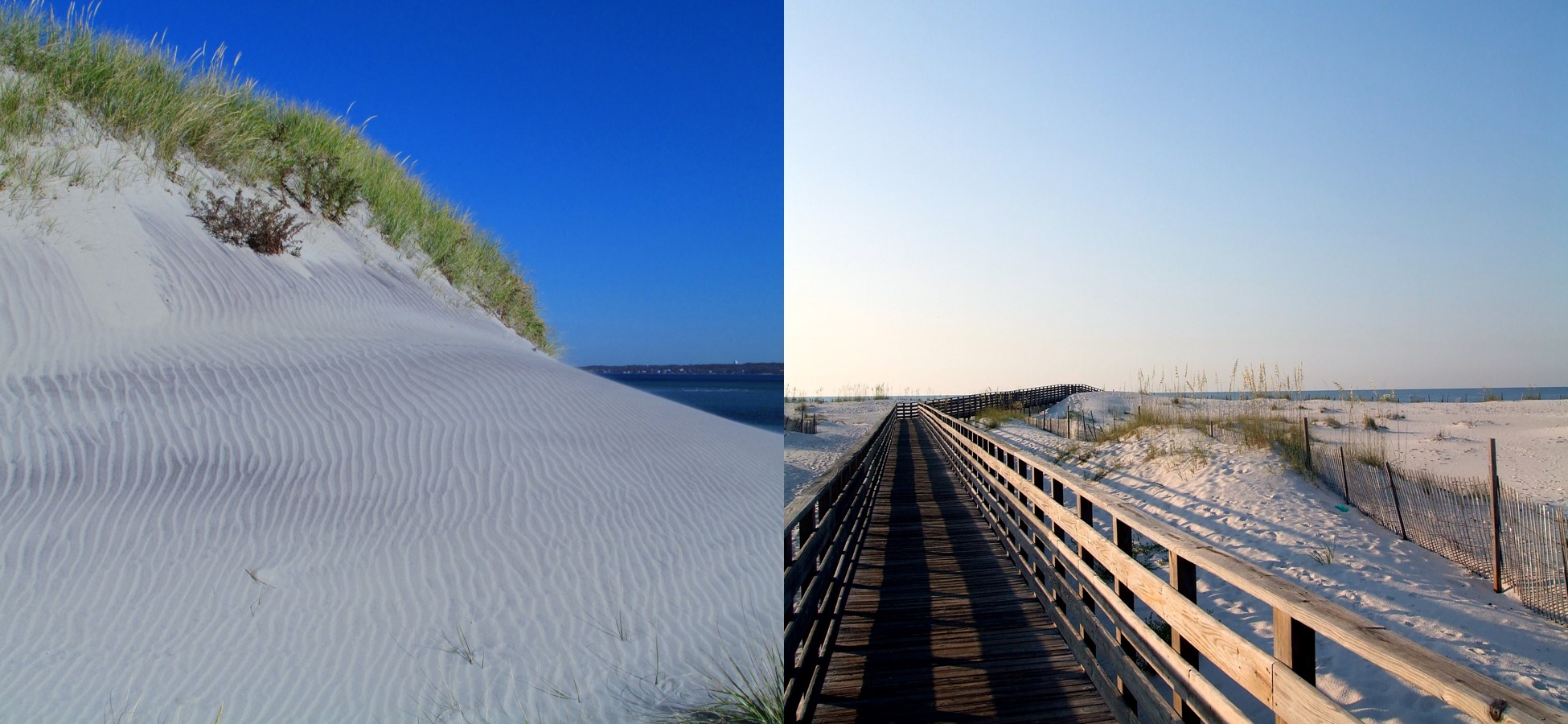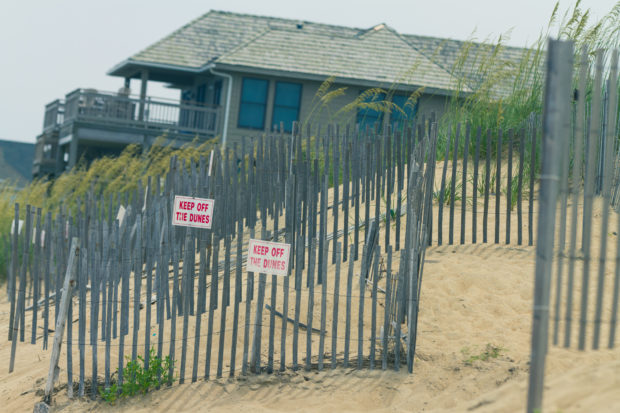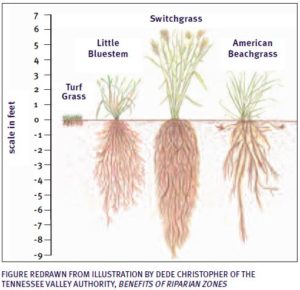We have much more to do and your continued support is needed now more than ever.
Coastal Dunes: Building a Stronger Coastline

On your way to the beach, have you ever walked on a boardwalk that spans a dune? Maybe it was a blistering summer day and you burned your bare feet on the hot boardwalk and thought “this boardwalk and dune are nothing but a nuisance?” While sometimes viewed as an impediment to beach access, dunes actually serve a critical role in keeping communities safe from coastal flooding. The ocean is a powerful force that charges inland during wind-whipped storms, and often times coastal dunes are the first line of defense. They parry the advancing waves and prevent flood waters from reaching houses, roads, schools, and other critical infrastructure located along the coastline. Dunes, when protected from human disturbance, are a strong and durable buffer against coastal flooding.
An effective but fragile resource


A dune’s ability to prevent flooding is determined in part by how sturdy it is. A healthy, natural dune is anchored in place by vegetation. When you see grasses growing on a dune, it’s like looking at the tip of an iceberg: What you see above ground is only a fraction of what is below the surface. Native dune grasses and vegetation have incredibly deep roots that develop over time, and the roots are particularly well equipped at binding otherwise loose piles of sand into a sturdy, natural seawall.
Without the deep roots of native dune grasses, the lifespan of a dune can be fleeting. There would be no cohesive material to hold the sand in place, and instead every gust of wind and every wave would carry away granules of sand until the dune likely disappeared entirely.
A treasure worth protecting

Dunes along the New England Coast, including those on Massachusetts’ Plum Island, are not only important for humans, but also for wildlife. Dunes are part of a natural coastal continuum that provides habitat for shorebirds, egrets, and small mammals, as well as rare plants such as seabeach needlegrass. Simple cost effective strategies can reduce human disturbance and increase vegetation cover, which in turn increases the ability of existing dunes to provide maximum flood protection. It is a win-win for humans and wildlife.
How to protect dunes so they protect us
Dunes are absolutely critical to reducing coastal flooding. So how do we ensure they continue protecting us?
- Limit human disturbance. The more humans that walk on a dune, the less likely it is that vegetation will survive. Many people don’t know that even walking across a dune without stepping on a single plant still causes damage. As you walk across the sand, each step compresses the sand and affects tiny microscopic organisms beneath the surface. Impacting these micro-organisms and compacting the sand can harm the vegetation. And without vegetation, erosion of the dune will accelerate and flood protection will be lost.
- Employ sand fencing, which can be an effective method for increasing accretion rates. Fencing can trap wind-blown sand along the dune so that the width and/or height of the dune increases.
- Increase education, a critical component. Many people don’t understand why there are signs telling them to keep off the dune or why there are fences that seemingly limit beach access. Educating your friends and neighbors about the importance and fragility of dunes helps ensure people traipsing over the dune won’t lead to the demise of one of nature’s best defenses against a surging ocean.
- Plant new vegetation. In areas where dunes have degraded over time, planting new vegetation can be a useful tool. It will take time for new plants to take hold and spread their roots throughout the subsurface, but new vegetation is far better than no vegetation.
- Practice renourishment. In particularly degraded areas where erosion has already removed vast amounts of sand, actual renourishment (also called sand replenishment) may be necessary. Bringing in new sand to build up the dune profile can be expensive and will take time to stabilize, but revegetation efforts can speed up the process and help the dune reach its ecological and flood protection potential more quickly.
New England’s local solution
Staff from NWF’s Northeast Regional Center are partnering with the University of New Hampshire, MA Department of Conservation & Recreation, MA Coastal Zone Management, and the city of Newburyport to protect coastal dunes on Plum Island.
Find Out MoreIf you live in the Plum Island area, keep your eyes out for a notice announcing a community meeting this winter that will be devoted entirely to addressing erosion and dune restoration on the north end of Plum Island.





















